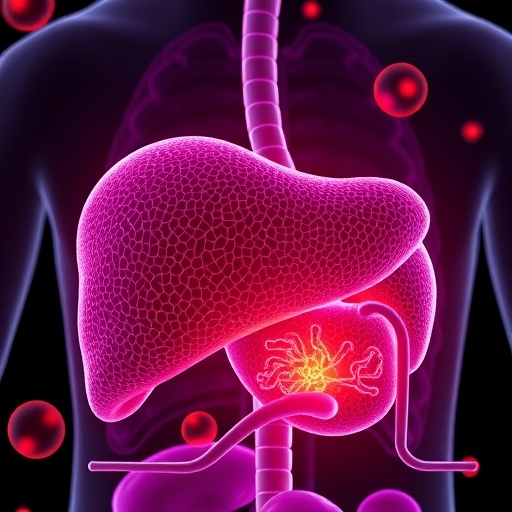Recent scientific advancements have illuminated the intricate processes governing liver regeneration, shedding light on the pivotal role of lipid metabolism in this highly complex biological phenomenon. Researchers Duan, Chang, and Dai, along with their colleagues, have launched a profound investigation into the metabolic pathways involved in liver recovery, emphasizing how different forms of lipid metabolism interact within an integrated metabolic network to facilitate regeneration. Their findings pave the way for a deeper understanding of liver biology and potential therapeutic strategies aimed at liver diseases.
The liver stands out as one of the body’s most resilient organs, capable of undergoing remarkable regeneration after an injury or surgical removal. This regenerative capability is not only vital for maintaining liver function but also reveals fascinating metabolic dynamics that play out during the recovery process. The liver’s ability to self-repair relies heavily on its metabolic state, particularly in how it manages lipids, which serve as both building blocks and energy sources throughout regeneration.
In their research, the authors meticulously characterized the metabolic shifts that occur in the liver during different stages of regeneration. Lipids, which were once viewed merely as energy reserves or structural components of cells, are now recognized as crucial signaling molecules. These implications suggest that lipid metabolism and its regulation can significantly impact the efficiency and effectiveness of liver regeneration.
A key focus of Duan and colleagues’ work is the delineation of how various lipid species influence liver cell proliferation and survival. Certain fatty acids, for instance, have been shown to signal liver cells to proliferate and migrate to injured areas, while others may trigger inflammatory responses that can either aid healing or exacerbate damage. Understanding these nuanced roles provides insight into the metabolic environment that supports hepatic regeneration.
Moreover, the study emphasizes the interconnectedness of lipid metabolism with other metabolic networks, including glucose metabolism and amino acid metabolism. This integrated metabolic network underscores the complexity of liver regeneration and emphasizes that targeting a single pathway may not suffice for therapeutic interventions. Instead, a holistic approach that considers the interplay between various metabolic processes appears crucial in developing effective treatments for liver diseases.
Interestingly, the findings also highlight the significant influence of the microbiome on lipid metabolism during liver regeneration. The gut-liver axis, a concept that illustrates the bidirectional communication between the gut microbiota and the liver, has implications for how dietary intake and microbial diversity can affect liver recovery processes. This facet of research opens new doors for nutritional and microbiome-focused therapies, potentially improving outcomes for patients suffering from liver-related ailments.
The study employed advanced metabolomics techniques, enabling the researchers to identify specific lipid metabolites that correlate with successful regeneration. By mapping these metabolites to different phases of liver healing, the researchers could elucidate potential biomarkers for monitoring liver recovery. This information can prove invaluable for clinicians aiming to assess the progress of their patients following liver injury or surgery.
Through their work, Duan, Chang, and Dai present a paradigm shift in how we conceptualize liver regeneration – moving beyond mere cellular proliferation to a comprehensive view that encompasses metabolic regulation and network dynamics. Their findings advocate for future research to delve deeper into the mechanisms that underlie these metabolic phenomena and their implications for liver health.
A particularly novel aspect of the study is the exploration of therapeutic potential stemming from this metabolic understanding. By identifying metabolic targets within the lipid regulatory pathways, researchers may devise new strategies that enhance liver regeneration, mitigate damage, and ultimately improve patient outcomes. This could lead to innovative treatment options for conditions such as fatty liver disease, cirrhosis, and liver cancer.
Furthermore, the implications extend beyond the liver itself. The knowledge gained from this research has broader relevance within the field of regenerative medicine, where understanding the metabolic cues that govern tissue regeneration could inspire similar investigations in other organs. The potential for cross-disciplinary applications is immense, with insights from liver studies likely to influence strategies in regenerative therapies for various health challenges.
In conclusion, this groundbreaking research not only crystallizes our understanding of lipid metabolism’s role in liver regeneration but also sets a foundation for the development of novel therapeutic interventions. As science advances, the hope is that we will eventually translate these intricate biological insights into practical applications that enhance human health and wellbeing. The intricate dance between lipids and liver cells is just beginning to reveal its secrets, promising a future where liver-related diseases can be managed or perhaps even cured through metabolic manipulation.
Ultimately, the study serves as a reminder of the interconnectedness of metabolic processes in the human body, shedding light on the intricate biochemical webs that sustain life. The authors’ work signals a call to arms for researchers and clinicians alike to explore the depths of metabolic networks and their relevance in health and disease.
As we move forward in the era of precision medicine, embracing comprehensive metabolic investigations such as those presented in this study will be crucial for unraveling the complexities of human physiology and fostering breakthroughs in medical science.
Subject of Research: The role of lipid metabolism in liver regeneration and its implications for therapeutic interventions.
Article Title: Lipid metabolism orchestrates liver regeneration: an integrated metabolic network.
Article References:
Duan, L., Chang, Y., Dai, J. et al. Lipid metabolism orchestrates liver regeneration: an integrated metabolic network.
J Transl Med 23, 1115 (2025). https://doi.org/10.1186/s12967-025-07232-5
Image Credits: AI Generated
DOI: 10.1186/s12967-025-07232-5
Keywords: liver regeneration, lipid metabolism, metabolic network, hepatic recovery, therapeutic interventions, microbiome, metabolomics, precision medicine.




